Vizio P-Series Quantum X (P65QX-H1) Review: A Solid 4K Performer
The Vizio P65QX-H1 is a great 4K TV but faces some serious competition, including from within the Vizio brand
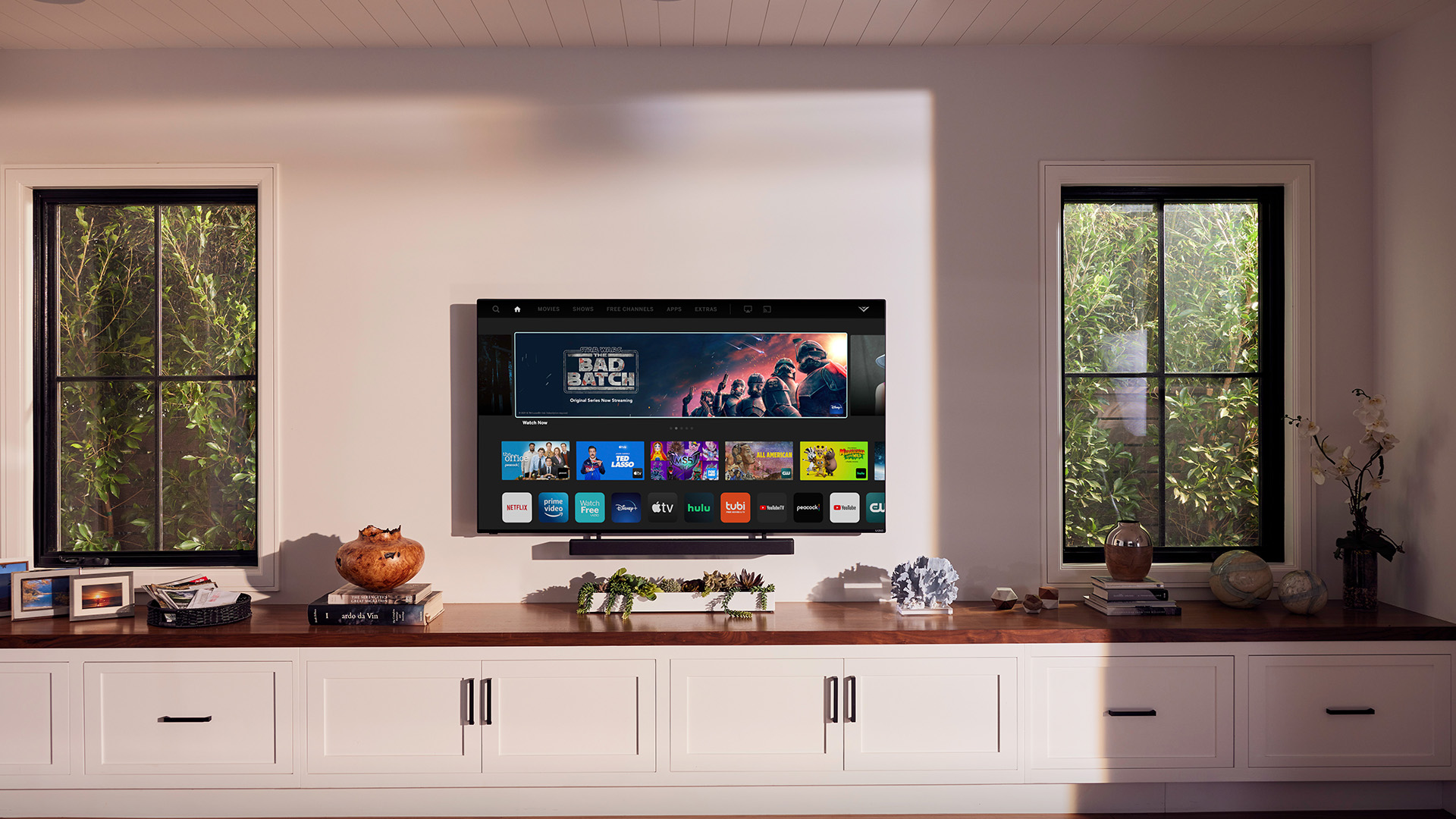
With a big, bright picture, the 65-inch Vizio P-Series Quantum X faces some tough competition from similar sets at this price point, as well as from entry-level OLEDs
-
+
Big, bright picture
-
+
Solid 4K features
-
-
Some image uniformity issues
-
-
A less than competitive price
Why you can trust T3

The good news about the best TVs, aside from the fact that they deliver sharper pictures every year, is that shoppers have a lot of very solid models to choose from. But that presents something of a problem for the 65-inch Vizio P-Series Quantum X. While it delivers a respectable picture and list of 4K features, it is pressed on the one hand by much less expensive models and on the other by OLED TVs that have been coming down in price. So, while the Vizio P-Series Quantum X has no serious weaknesses, it also no particular skills to distinguish itself from the rest of the field.
The 65-inch Vizio P-Series Quantum X is, as the name suggests, a quantum dot LCD 4K TV. The quantum layer increases the color spectrum that the panel can display, and Vizio, which has never been known for its subtly, has pumped up the brightness of this set, aided and abetted by an active full-array local dimming feature to improve contrast. The Quantum X also supports most of the latest video standards including Dolby Vision, HDR10, HLG, and variable refresh rate and low latency modes for gamers who want to play on a big screen. It all makes for a well-rounded package.
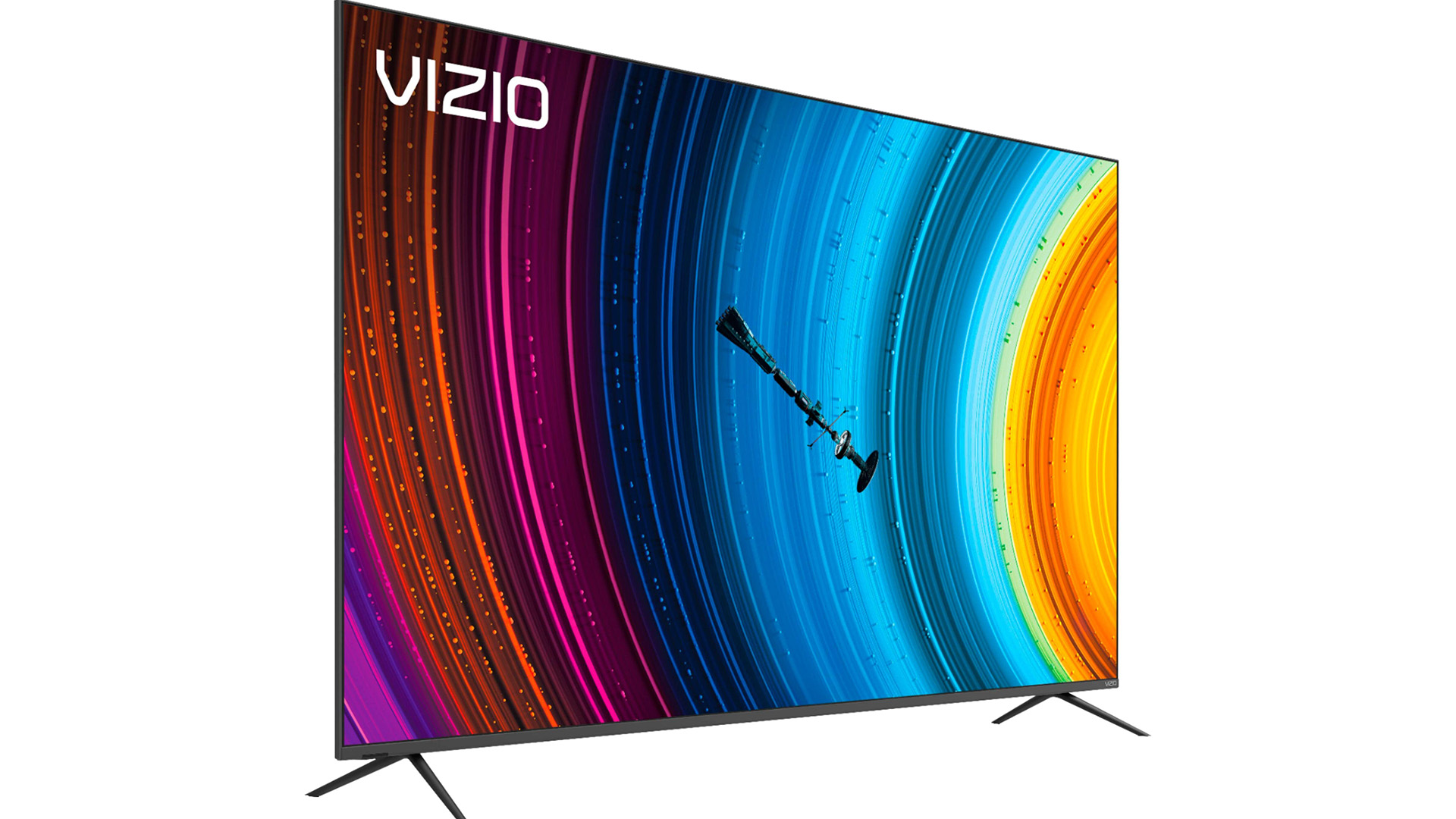
Vizio P-Series Quantum X Review: Price and Features
The Vizio P-Series is the company's top-of-the-line LCD family, and the Quantum X is the matriarch, available in three sizes: 65-, 75-, and 85-inches. The smallest model is $1,499.99, while the 75-incher is $1,999.99 and the huge 85-inch model is $3,099.99.
The Vizio P-Series Quantum X includes a complete array of connections and features needed for either a home theater or gaming setup. There's no Bluetooth support for, say, a wireless pair of headphones, but there are all the basics, including Ethernet and USB ports, for example, as well as four HDMI 2.1 ports. The HDMI ports support the latest features, such as the aforementioned variable refresh rate for 120Hz 4K game playing, which is possible on the PlayStation 5 and Xbox Series X consoles.
During testing, I appreciated the fact that one of the HDMI ports supports eARC (enhanced audio return channel). It allows the set to pass through high-bandwidth digital audio formats like Dolby Atmos and DTS: X directly to a compatible soundbar or AV receiver. Coupled with Vizio's Elevate sound system, using the eARC connection generated a more cinema-like sonic experience with full-blown, high-resolution soundtracks.
The Vizio P-Series also has smart TV features for handling online entertainment sources. The company relies largely on its own SmartCast software to handle these chores, rather than using Roku TV or Android TV, for example. It includes most of the popular video streaming services, like Netflix and Hulu, but Vizio's list is not as extensive as what Roku or Google support.
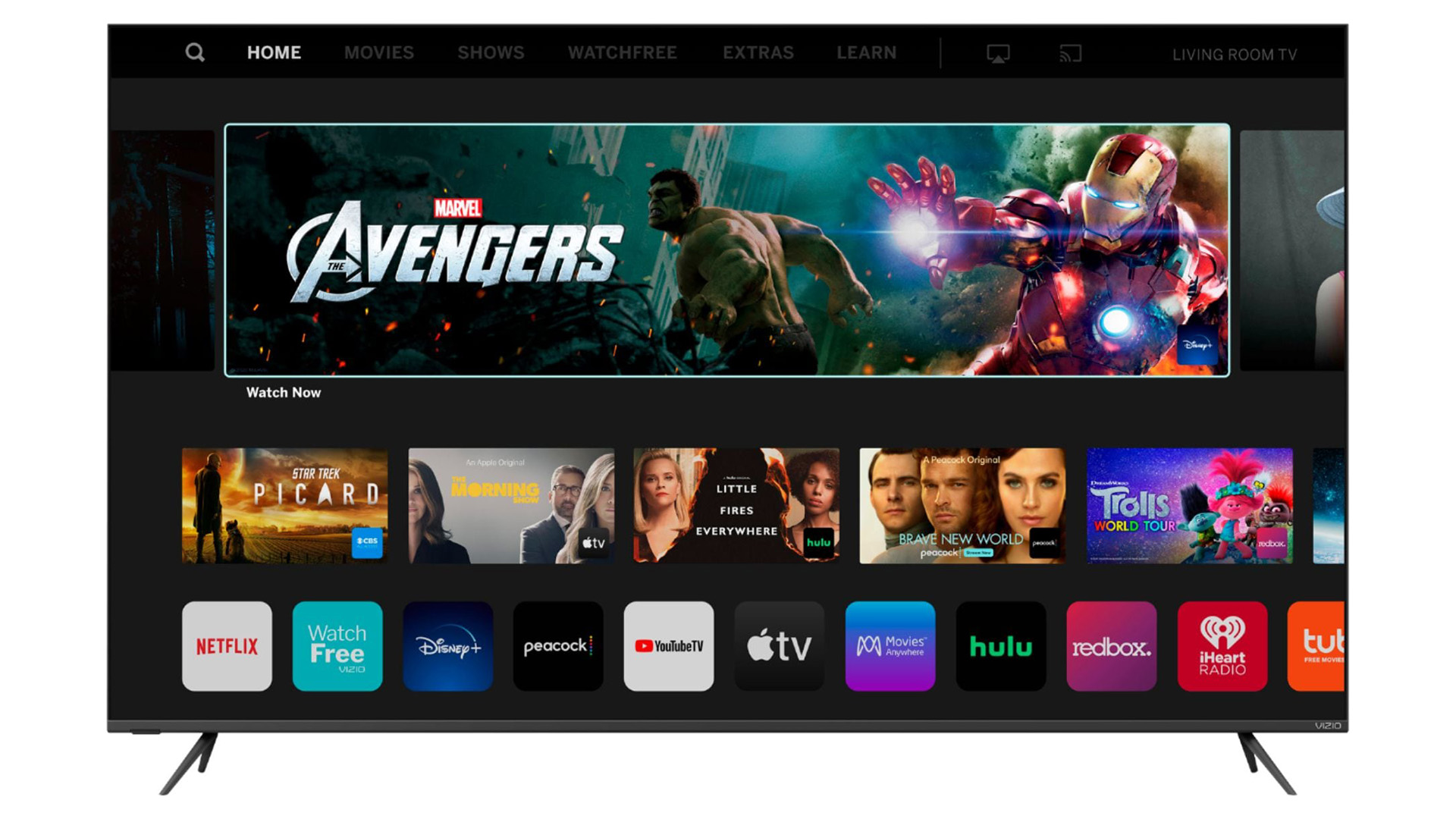
Vizio P-Series Quantum X Review: Picture Performance
Vizio includes a standard set of six preset picture settings: Vivid, Bright, Calibrated, Calibrated Dark, Game and Sports. There's also an ambient light sensor that will adjust the picture according to the amount of light detected in your room, but we turned this feature off. You can also adjust a wide variety of individual settings including the backlight, contrast, color temperature, tint, and sharpness processing. Advanced settings include edge enhancement, motion control (to reduce blur), and active full array dimming. Unfortunately, there's no support for Filmmaker Mode, a relatively recent standard designed to shut down video processing and digital enhancements that can mar the look of a movie.
I found that Calibrated mode was best overall. Putting the set into its preset Calibrated Dark mode –usually the best for purists and cinephile – proved too severe for shadowy areas and sinister subjects disappeared into the darkness of certain scenes. And while the set can reproduce about 99 percent of the standard color spectrum, it tended to skew toward the warmer side by overemphasizing reddish tones. (If you put the P-Series Quantum X into Bright mode, red dresses and lights instantly become oversaturated and dominate a scene.) Watching standard HD broadcasts, for example, the image often looked too rouge for our tastes even in Calibrated mode. Switching it into the Calibrated Dark mode corrected the issue and also reduced some of the flattening effects of upscaling (changing the edge enhancement setting will also do the trick).
As with most sets of this caliber, the Vizio P-Series Quantum X really came to life with 4K material. There was virtually no haloing or flaring, which can sometimes occur with bright objects like stars against a dark background. And with shows originally shot in 4K, like The Mandalorian, the set delivered dusty deserts that were so realistic our throats were parched. Threatening skies delivered ominous shading with minimal banding. Proton blasts and the usual sci-fi pyrotechnics all looked crisp and lethal. So, while you may not push this TV to its 3,000 nits of brightness performance limits, Vizio's active dimming demonstrated that it can be effective when it needs to be.
While we noticed the slightly warmer red picture in other material, this bias seemed less noticeable in 4K material. The Ultra HD version of Uncut Gems, for example, yielded very realistic shading of a variety of skin tones and details such as reflections of jewelry in through-the-glass shots and in the protagonist's glasses. Even the jewel-encrusted Furby looked realistic (if such a thing is possible).
Most programming is not available in 4K, so we tested the Vizio P-Series Quantum X's upscaling skills with a variety of material and witnessed some mixed results. An HD version of Quantum of Solace produced Bond in all his glory, from flowing white tropical shirts to the aquamarine of exotic seas. It even kept up with all the Aston Martin-destroying action. And an HD version of Avengers: Endgame also looked unperturbed by the upscaling.
On the other hand, the Vizio P-Series Quantum X did not do as well with an HD version of Guardians of the Galaxy. There was some pixelation in fast action sequences and conspicuous banding in foggy scenes such as the opening alien abduction.
Overall, the Vizio P-Series Quantum X delivers some impressive picture performance skills, as well as some minor flaws. We noticed, for example, that the horizontal viewing angles on this set were excellent, with little loss of brightness or color saturation as we moved off-center. That's an impressive strength usually reserved for OLED TVs. On the other hand, the model we tested had some screen uniformity issues, so that on gray test patterns there were occasionally some admittedly subtle but still detectable unwanted blotchy areas.

Vizio P-Series Quantum X Review: Sound Quality
Sound quality continues to be the Achilles heel of many big-screen TVs, and the Vizio P-Series Quantum X is no exception. It includes only a few optional audio settings: auto surround sound, a Virtual X mode, or surround off. In surround sound mode, the TV lacked dynamic range so what should have been thrilling crescendos in soundtracks seemed suppressed and cramped. Music suffered similarly. My quintessential vocal test track is Aha's Take On Me, and on the Vizio P-Series Quantum X the mid-range sections did well enough but the lower end kick drum frequencies sounded thin and weak. The inimitable vocals also remained flat rather than soaring for the chorus. Turning off the surround sound mode did not help and made the music sound even more one-dimensional.
On the P-Series Quantum, I found the Virtual X mode actually the most pleasing, boosting mid-range notes and giving the lower notes a little more depth. On the other hand, the same mode had a detrimental effect on Steely Dan, pulling Jeff Baxter's guitar solos down into the mix and letting the piano dominate instead.
Still, the built-in pair of 15-watt speakers in the back of the Vizio P-Series Quantum X are powerful enough to deliver plenty of decibels and fill a large living room with sound. But if you want to be shaken with booming explosions and thumping bass, add a sound bar or a system like Vizio's own Elevate.
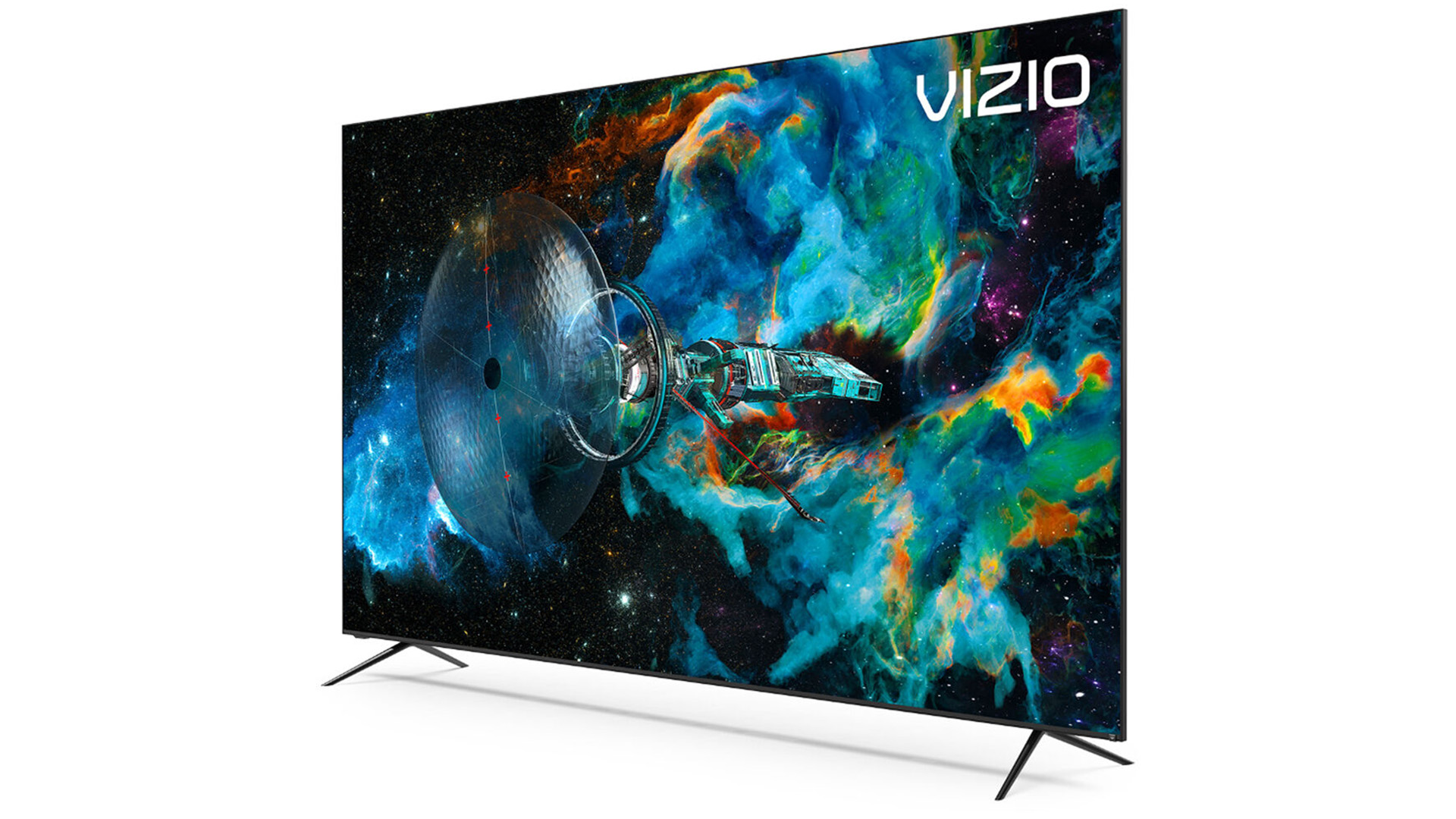
Vizio P-Series Quantum X Review: Design and Usability
The design of the Vizio P-Series sets is strictly pro forma: basic black with a pair of Y-shaped legs that attach at either end to support it on a tabletop. A few bumps here and there didn't perturb it; the legs proved solid enough. The legs lift the set about 2.5-inches off the tabletop, enough to fit a slim soundbar underneath. If you want to wall-mount the TV, it takes a standard VESA 400 by 400 bracket.
To help you set up the rest of its features, the Vizio P-Series Quantum X has a new and improved remote control. Slimmer and more logically laid out than previous Vizio controllers, it includes a familiar four-way thumb pad and center "OK" button to help you navigate menus. There's also a numeric keypad (often missing from today's remotes) and several dedicated buttons for services including Netflix and Amazon Prime Video. Most noteworthy for those of us who sometimes struggle to make out dialogue is a dedicated CC (closed caption) button, and cheapskates (like me!) will appreciate the "Watch Free" button that takes you to streaming content Vizio has aggregated for viewers.
The home button on the remote control invokes Vizio's proprietary smart TV interface, SmartCast, which presents you with a slew of streaming options such as Magellan TV and IFC movie picks you can watch for free. At the bottom of the screen, you'll see icons for popular apps including Netflix, Amazon Prime Video, Hulu, Apple TV, Disney +, and Peacock. Additional streaming services can be added via Vizio's App Catalog. It includes most of the popular services such as music channels like Spotify, Pandora, and Tidal. However, Vizio doesn't have the breadth or depth of options like Roku TV and Android TV. One app, in particular, that is missing from Vizio's SmartCast is the Criterion Channel, which is one of the best subscription services for movie fans.
Amazon Alexa and Google Assistant fans should also note that the Vizio P-Series does not directly support voice commands. There's no microphone built into the remote, so you have to use your own smart speaker or similarly enabled device to control the set using downloaded Vizio skills.
Vizio P-Series Quantum X Review: Verdict
The Vizio P-Series Quantum X is a solid all-around 4K TV. It has no significant flaws and lots to recommend it, such a bright picture and a well-rounded set of features and connections. However, less expensive sets in the 64-inch 4K category, such as the TCL 5-Series, are nipping at its heels with an admittedly much smaller set of features but at prices that are half that of the P-Series Quantum X. So ultimately, Vizio's P-Series Quantum X while presenting a fine picture may have trouble convincing many buyers to take a look.
Vizio P-Series Quantum X Review: Also Consider
There is a lot, and we mean a lot, of competition in the best 65-inch 4K TV size range – even from Vizio itself. For example, if you like what you see in the Vizio P-Series Quantum X (the P65QX-H1), you'll find there's a confusingly named non-X version (the P65Q9-H1) of this set. It has fewer active dimming zones (just 200 compared to 384) and less video processing features, but it's about $300 less at some retailers.
If you're looking for more of a bargain in the 65-inch 4K category and don't want to fuss with settings and fancy features, consider TCL's 5-Series Roku TV 65-inch set. It boasts a quantum dot display, supports Dolby Vision and HDR10, but has a lesser refresh rate of 60 Hz (versus the P-Series' 120 Hz) and it isn't as bright as the Vizio model here. But at just $750, the TCL 5-Series is half the price of the Vizio P-Series Quantum X.
Finally, if you are upgrading and have decided to invest in the best possible picture for your money, OLED TVs are now a more attainable option. These sets offer inky blacks, scintillating highlights and color intensity that quantum dot LCD sets still cannot match. LG's 65-inch CX OLED from last year is still available at about $1,900. And if models remain in stock, you may find even better prices soon.
Not confused enough yet? Then consider that Vizio has its own bargain OLED offering, the 65-inch OLED65-H1, with a recently reduced price of just about $1,500, virtually the same price as the P-Series Quantum X. Choosing between those two is difficult, but if you simply want the best picture for your money, we'd lean toward the OLED.
Sign up to the T3 newsletter for smarter living straight to your inbox
Get all the latest news, reviews, deals and buying guides on gorgeous tech, home and active products from the T3 experts
John R. Quain has covered science and technology for more than two decades. In addition to being a contributor at T3, he is a contributing editor at Tom's Guide, a regular contributor to The New York Times and the weekly tech guru for WTVN. His articles have appeared in Car & Driver, Esquire, Fast Company, Rolling Stone, and U.S. News & World Report, as well as numerous technology publications. Quain was the recipient of a Paris Accords of Science Communication fellowship in 2019. He regularly speaks about issues relating to autonomous vehicles and is the Editor-in-Chief of OntheRoadtoAutonomy.com. You can follow him on Twitter @jqontech
-
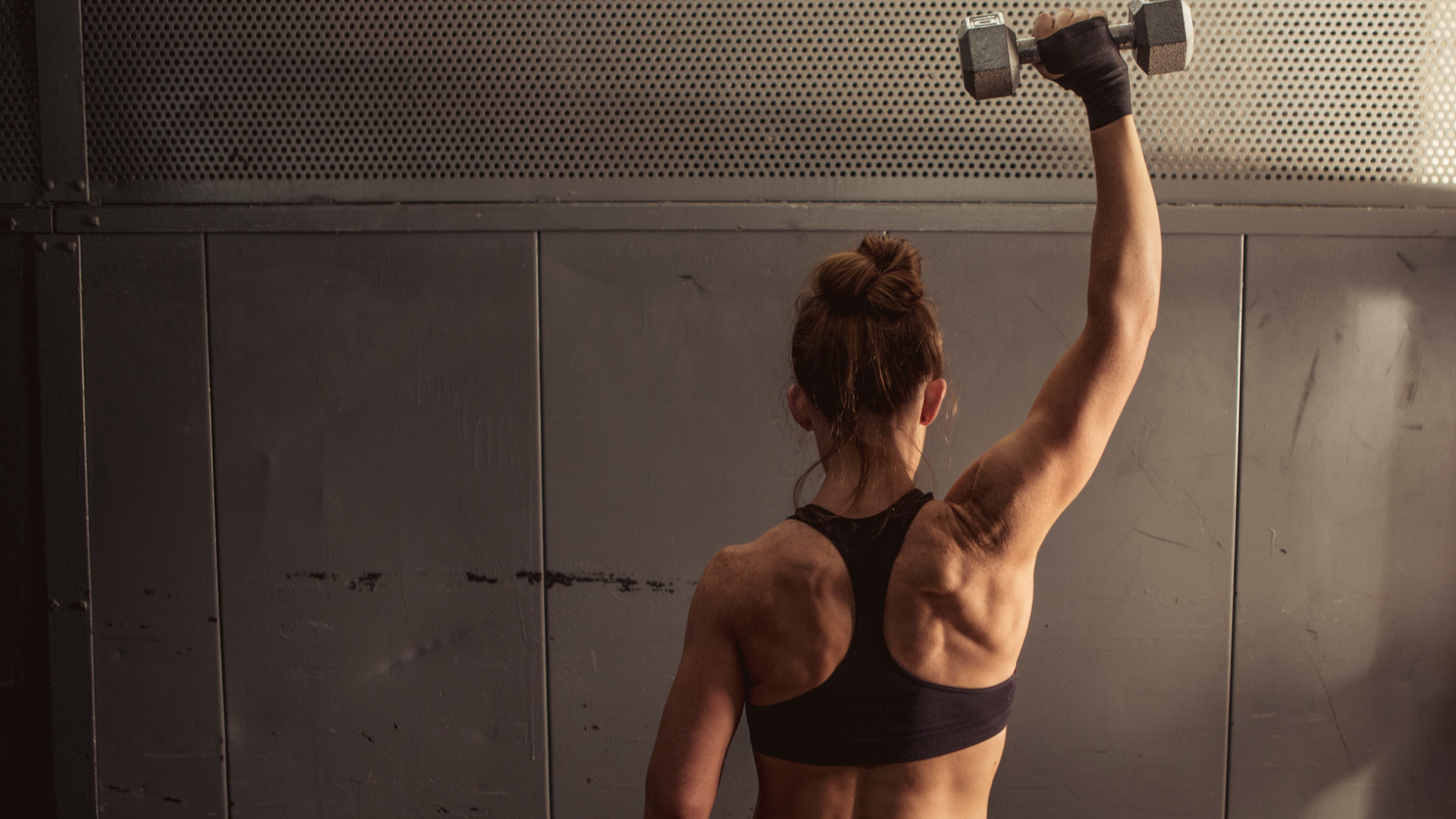 Three exercises to 'life-proof' your shoulders, according to a mobility expert
Three exercises to 'life-proof' your shoulders, according to a mobility expertHealthy shoulders mean better movement, more strength and less injury
By Bryony Firth-Bernard Published
-
 Coleman takes on YETI with lighter, tougher and cheaper Pro Cooler range
Coleman takes on YETI with lighter, tougher and cheaper Pro Cooler rangeMove over, YETI – there’s a new cooler in town, and it's not here to play nice
By Matt Kollat Published
-
 In the future, you might never have to take off your Galaxy Ring to charge it
In the future, you might never have to take off your Galaxy Ring to charge itA newly uncovered patent reveals Samsung is working on a wearable charger for its Galaxy Ring, and it makes a lot of sense
By Matt Kollat Published